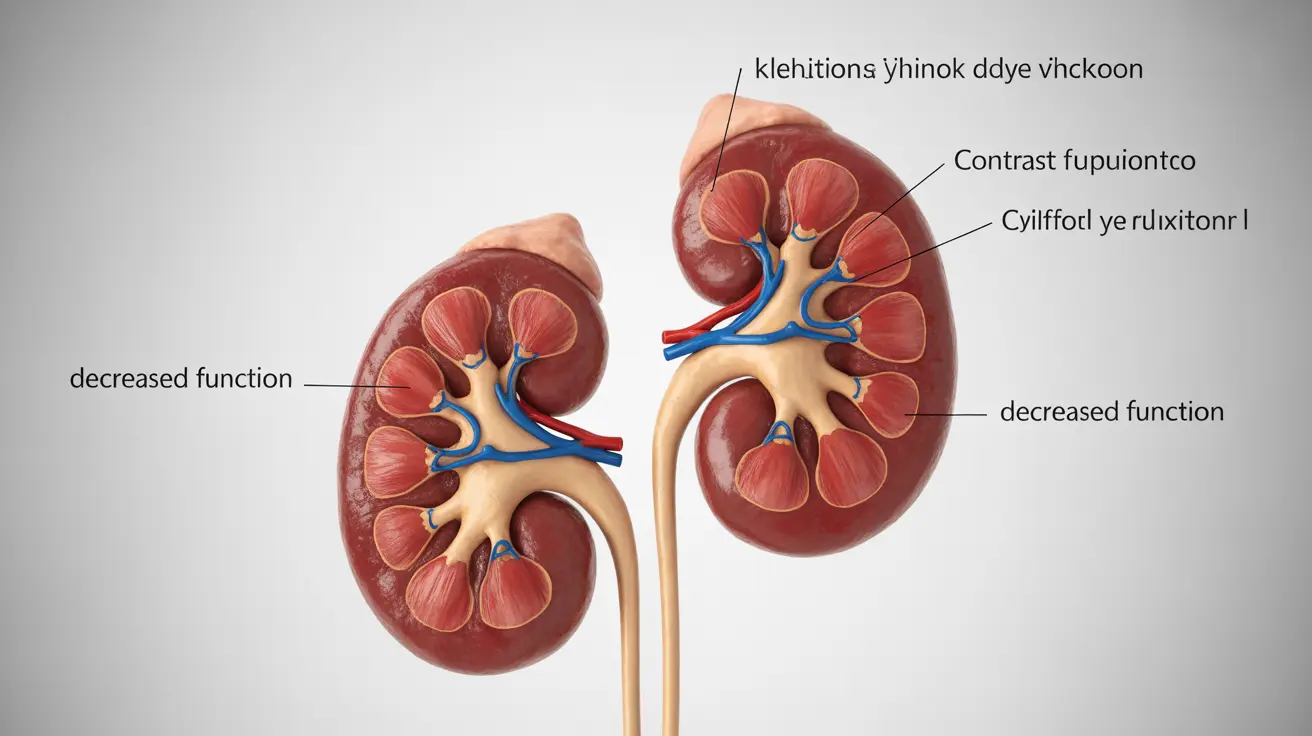Contrast dye, commonly used in medical imaging procedures like CT scans and angiograms, can sometimes affect kidney function. Understanding the symptoms of contrast dye kidney failure is crucial for patients undergoing these procedures, as early recognition can lead to better outcomes.
This comprehensive guide explores the signs, risks, and management of contrast-induced kidney problems, helping you make informed decisions about your medical care and know when to seek help.
Key Symptoms of Contrast Dye Kidney Failure
When contrast dye affects kidney function, several distinctive symptoms may appear:
- Decreased urine output
- Swelling in legs, ankles, or feet
- Fatigue and weakness
- Shortness of breath
- Nausea or vomiting
- Confusion or mental fog
These symptoms can range from mild to severe, and their presentation may vary among individuals. Monitoring these signs after receiving contrast dye is essential for early detection and intervention.
Timeline of Symptom Development
Contrast-induced kidney problems typically follow a predictable timeline:
- 24-48 hours: Initial symptoms may begin to appear
- 3-5 days: Peak effect on kidney function
- 1-3 weeks: Recovery period for most patients
Understanding this timeline helps both patients and healthcare providers monitor for potential complications and implement appropriate interventions when necessary.
Risk Factors and Prevention
Certain individuals face higher risks of developing contrast dye kidney failure:
- Existing kidney disease or reduced kidney function
- Diabetes
- Advanced age (over 60)
- Dehydration
- Multiple myeloma
- Recent exposure to other kidney-toxic substances
Preventive Measures
Healthcare providers may implement several strategies to reduce risk:
- Pre-procedure hydration
- Minimizing contrast dye volume
- Using alternative imaging methods when possible
- Temporary adjustment of certain medications
- Careful monitoring of kidney function before and after the procedure
Treatment Approaches
Treatment for contrast dye kidney failure focuses on supporting kidney function and preventing further damage:
- Intravenous fluid administration
- Temporary discontinuation of certain medications
- Close monitoring of kidney function through blood tests
- Dialysis in severe cases
- Management of underlying conditions
Frequently Asked Questions
What are the common symptoms of kidney failure caused by contrast dye used in medical imaging? Common symptoms include decreased urination, swelling in the extremities, fatigue, shortness of breath, and nausea. Some patients may also experience confusion or mental changes.
How soon after receiving contrast dye do symptoms of contrast-induced nephropathy typically appear? Symptoms usually begin within 24-48 hours after contrast dye administration, with peak effects occurring around 3-5 days post-procedure.
Who is most at risk of developing kidney problems from contrast dye exposure? Individuals with existing kidney disease, diabetes, those over 60 years old, and patients with multiple myeloma face the highest risk. Dehydration and recent exposure to kidney-toxic substances also increase risk.
What treatments or preventive measures can help manage or reduce the risk of contrast-induced kidney injury? Preventive measures include proper hydration before and after the procedure, minimizing contrast dye volume, and temporary medication adjustments. Treatment may involve IV fluids, medication management, and careful monitoring of kidney function.
When should I seek medical attention if I experience symptoms after a contrast dye procedure? Seek immediate medical attention if you experience decreased urination, significant swelling, severe fatigue, difficulty breathing, or confusion within the first few days after receiving contrast dye.




